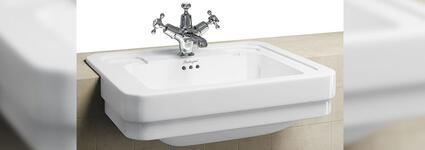
Some bathroom jobs should be left to the experts but sometimes the experts aren’t available, or the job is small enough to be done using your own expertise.
Installing a bathroom sink can be an easy enough installation to perform yourself without calling out an expensive plumber, saving you time and money.
This rough guide will show you the plumbing basics which should translate to most installations look at our website to see the types of Bathroom sinks you may choose.
The best way to work out what to do is to know what not to do, so here are the most common mistakes made during the installation process; if you find yourself doing any of these then you need to stop!
Common mistakes when installing a bathroom sink
- Using pipes that are too small for the installation
- Ignoring or violating code restrictions for your area
- Not using Teflon tape or pipe compound around threaded joints
- Not leveling your bathroom fixtures while installing them
- Not installing an air gap filling for bathroom fixtures
- Cutting supply stub outs too short to install the shut-off valves after the finished wall is in place
- Not properly aligning tubing into fittings or stop valves
- Not getting rid of dirt and debris from the lines by running the outside hose valves or flushing toilets before turning the water back on in your home
- Attaching copper to galvanised metal without using a brass or dielectric fitting between the two
What you need to install your bathroom sink
For roughing in pipes, you will need hot and cold supply, shut-off valves, transition fixings, and flexible tubing for the above shut-off valves (if required).
Little piping is needed if installed in a back-to-back arrangement.
Let’s start…
Leave at least 4 inches from the bathroom sink to the toilet tank or finished wall, leave 2 inches from the tub, and at least 21 inches from the front edge to a wall or fixture.
With enough surrounding space, cut the half-inch copper supply line at least 1 and a half inches from the finished wall to allow for the shutoff valve compression ring and the escutcheon.
After all these precautions are in place you can then begin the following 4 steps:
- Having removed the old sink, align your new bathroom sink against the wall, ensuring that you use a spirit level to make sure it is in the right position.
- Make connections by fitting flexible tap connector pipes and waste pipe parts to new taps, using gaskets and washers to create a watertight seal. Try to fit all parts to the new sink before installing the sink to the worktop or wall as it makes it more difficult to make amendments once the bathroom sink is fitted.
- Using the parts supplied, connect the waist part and the overflow and screw the sink to the wall or recess it into the worktop, making sure all the pipes can be easily connected.
- Using two adjustable spanners, tighten the flexible tap connectors, and use waterproof sealant around the lip of the unit.